LET’S SAY YOUR NOMADIC HOME DOESN’T HAVE a lot of solar power and battery capacity. Maybe you have one of the smaller LiFePo power stations. Or perhaps something like a 100 Watt folding solar panel, a 100 Amp hour battery, and a 400 Watt DC-to-AC inverter.
Let’s say you don’t want to use propane, butane, alcohol or other flame- and condensation-producing fuel.
And let’s say your vehicle is small.
How can your cook?
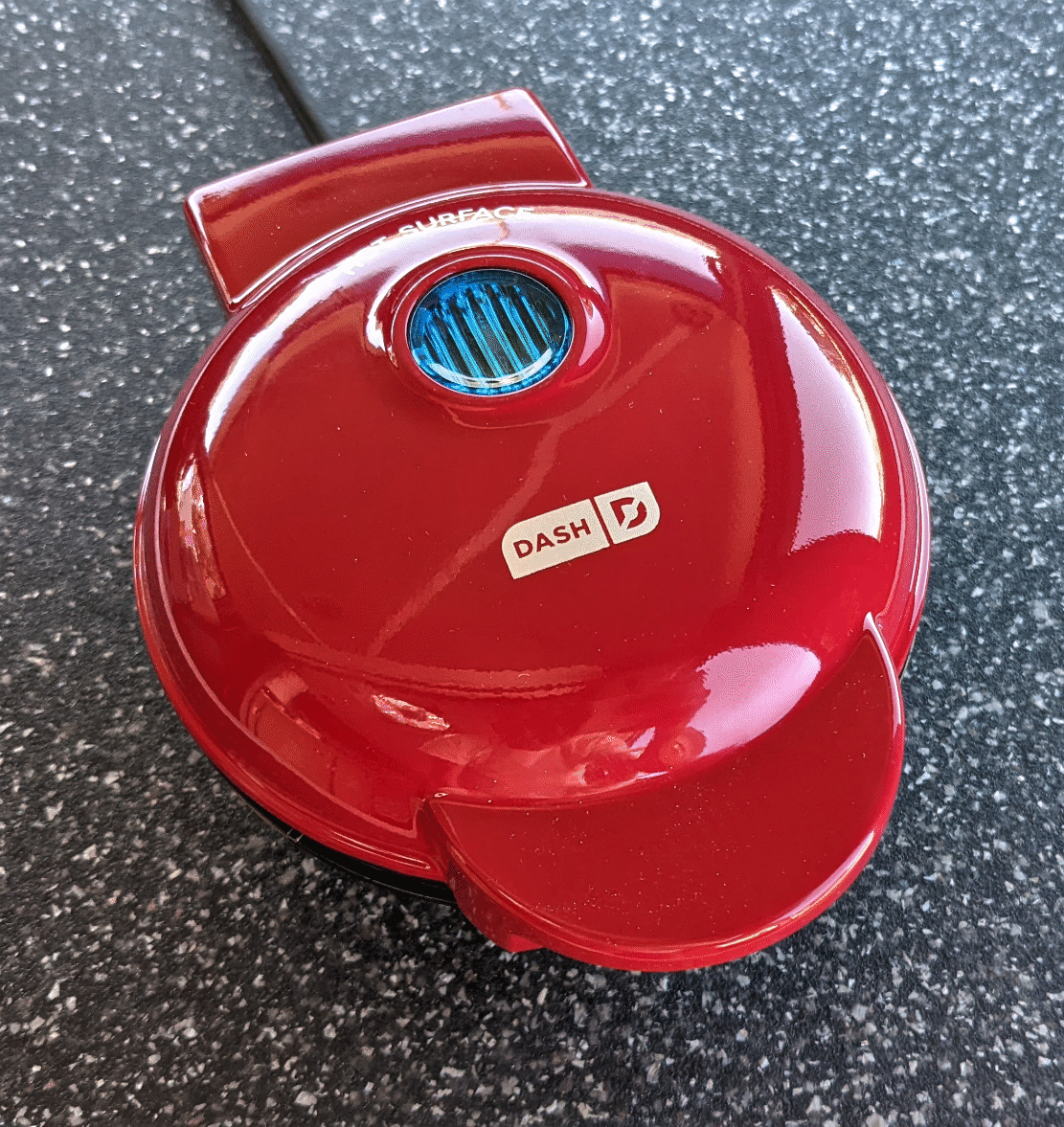
Can a tiny appliance solve a big problem?
I learned Dash and other brands are marketing compact electric griddles. They’re essentially mini waffle irons, about the size of a big fat hamburger. Both the top and bottom halves heat up. There are versions with flat-surface griddles, grills with ribbed surfaces and, of course, waffle patterns.
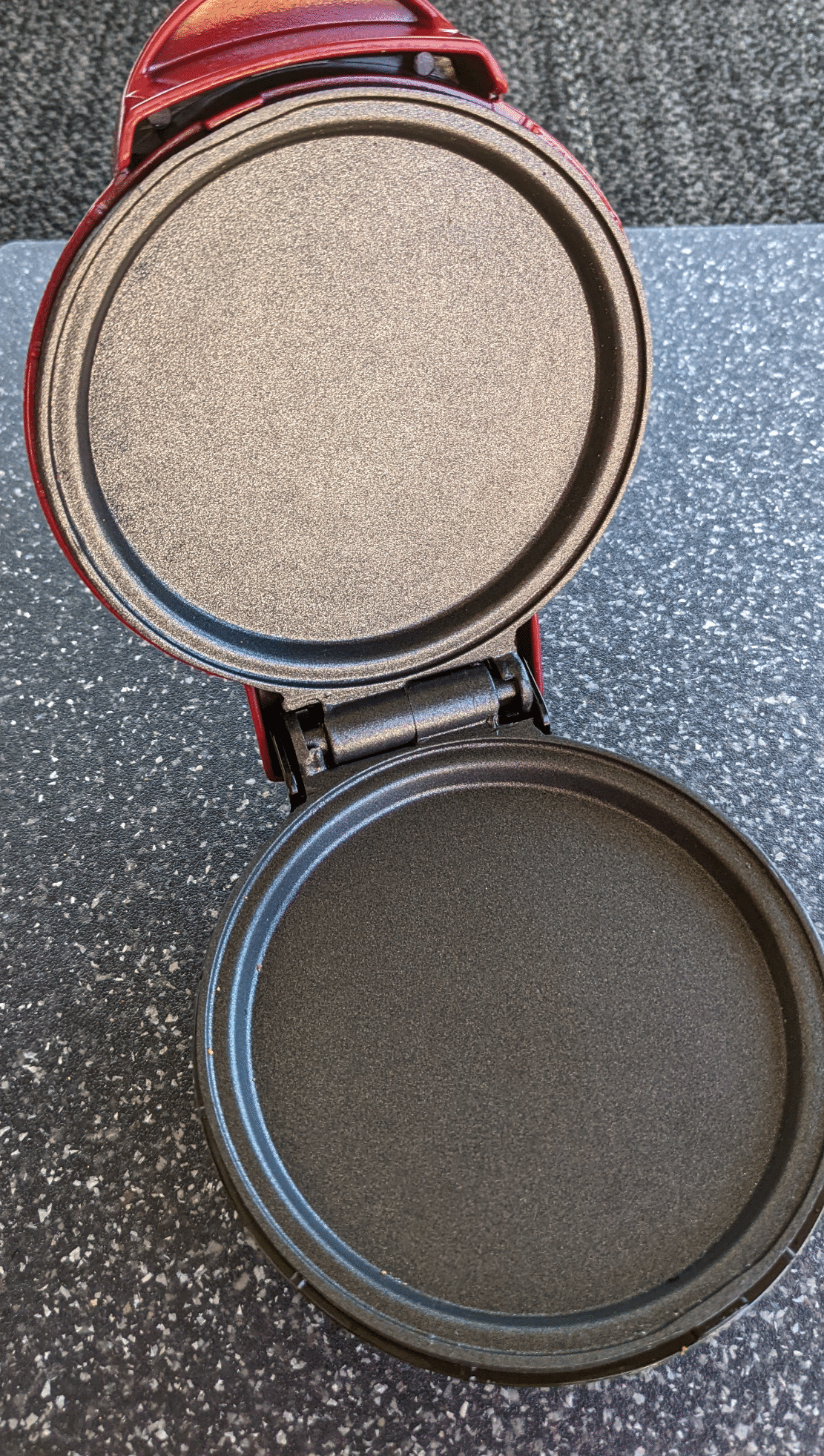
What caught my eye was their 400W power rating. That might be viable with a lower power electrical system. It would depend on how long you would be drawing power to cook something. And that would depend, in part, on how hot the griddle gets, and how quickly.
So I bought one to test and find out. The flat-surface griddle seemed the most versatile choice. And the easiest to clean after use.
How much power do these things draw?
At the moment, I’m fortunate enough to have access to shore power. So just to be safe, I plugged into that first to find out if the Dash Mini Maker Griddle would be a battery draining power hog. Or possibly an electrical hazard.
There is no on-off switch nor temperature selection. You just plug it in to turn it on and hope the factory-set temperature is in a useable range.
I ran the power through a Kill A Watt P3 to get some readings. During heat up it read 380 Watts, and about 2.98 Amps. Not bad. After about two minutes it reached its factory preset heat (about 330°F/165°C, according to my thermometer) and switched off. At first I thought the griddle had quit working. Zero Watts, zero Amps. Rats. I was about to chuck it out the door and write a harsh review on Amazon when the griddle’s blue light came back on and the Kill A Watt gave me some numbers again. Oh. Duh. It cycles on and off. That would save some power.
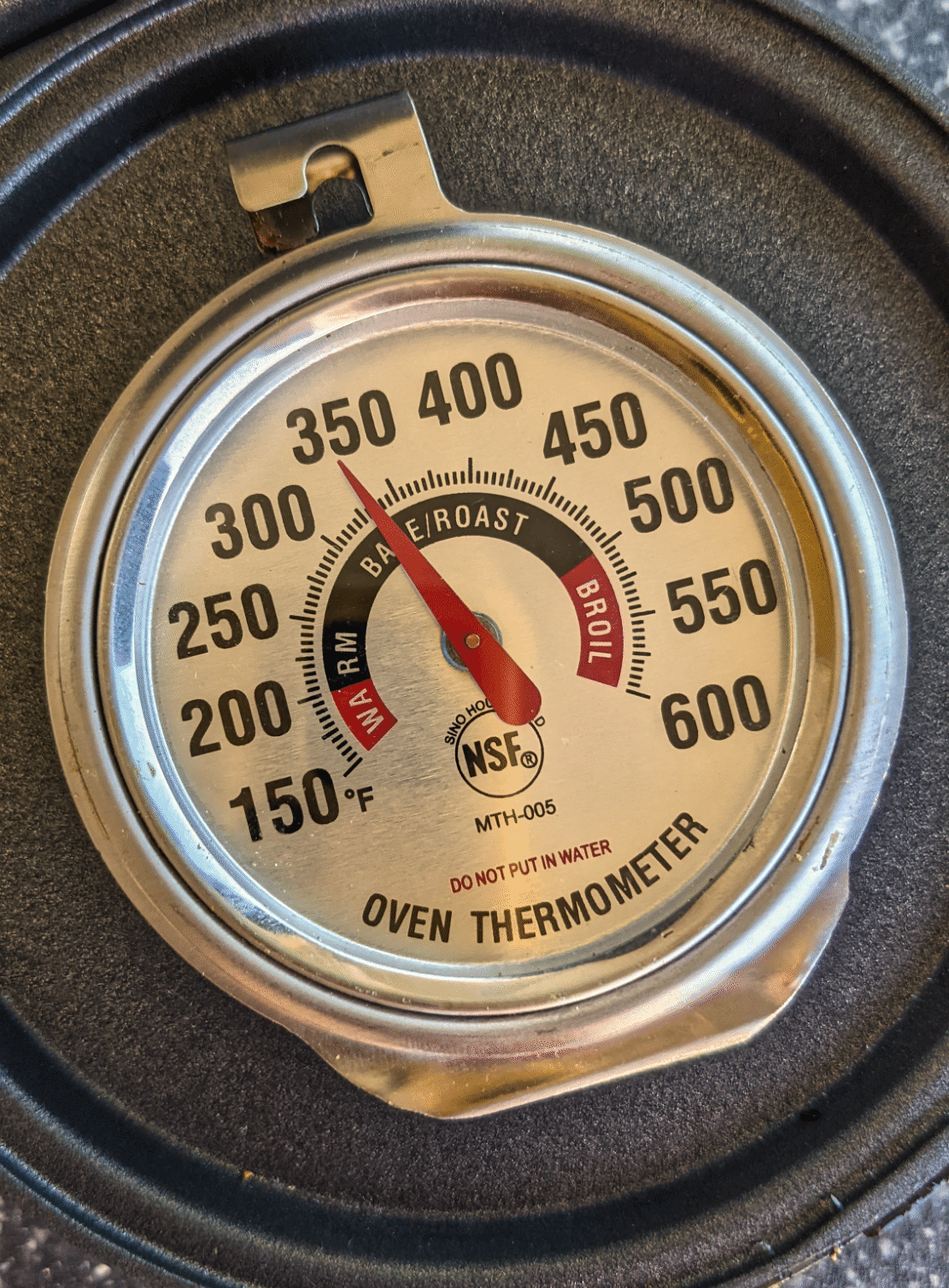
The main test, with batteries
Since the power consumption wasn’t high, and no fuses were blown, nor fires started, I was ready to plug the Dash into my van’s system. My system isn’t small, but it’s not huge. Sort of Goldilocks and the Three Bears “just right” for me. A 280W solar panel feeds two 100Ah lead-acid batteries connected to a 1,000W inverter.
The griddle gave me the same numbers on the Kill A Watt as before. My battery monitor had started at 13.3 Volts (at about 10:30 AM) and dropped to 12.7 while under load from the griddle.
By the time I finished mixing some pancake batter the griddle had reached maximum temperature and cycled off, with the battery monitor reading 13.3V again. “Okay,” I thought, “This might work out.”
I poured the batter on the griddle, closed it, and waited. The griddle cycled on again after about twenty seconds. I checked the status of the pancake. Firming up but not done. The griddle cycled off. Another inspection revealed the pancake was not quite done. At forty seconds, with the griddle still cycled off, I judged the pancake a perfect golden color. It also looked a little like an English muffin.
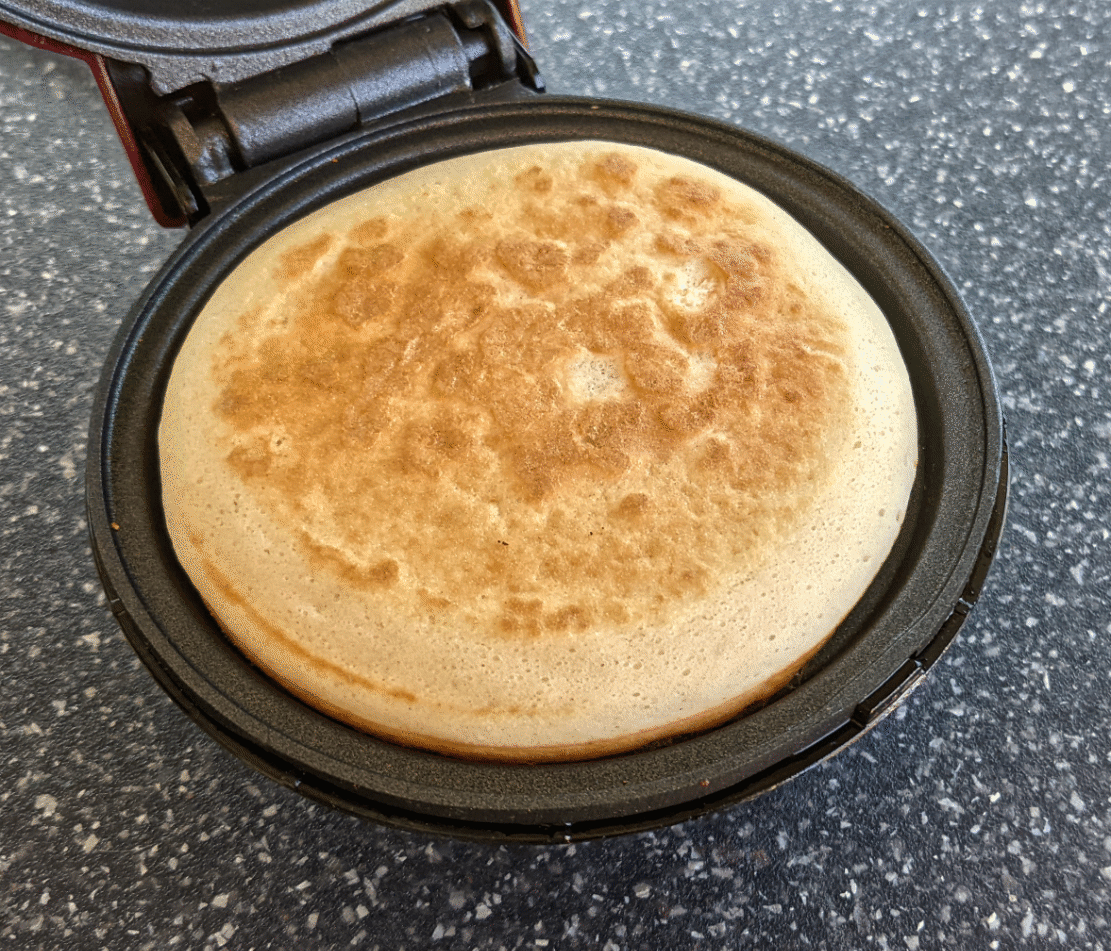
I made another pancake. This time the griddle cycled on only briefly. That was also the case with the third one. All three pancakes were cooked all the way through.
The voltage read 13.4 when I was done. Solar had been feeding my batteries while I cooked. So, cooking for only a few minutes during full daylight was no sweat for my system.
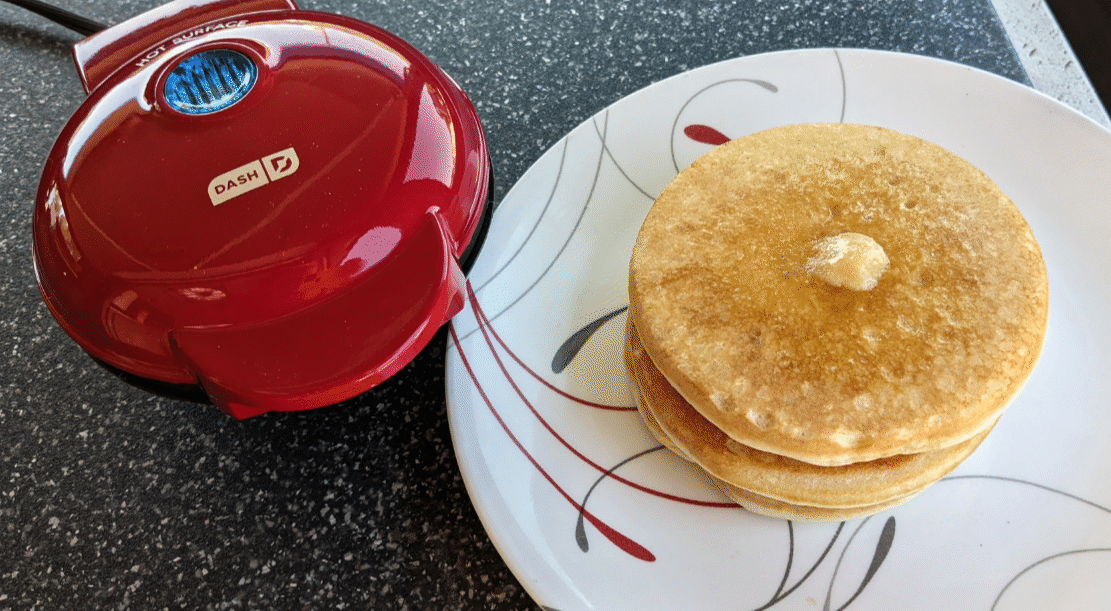
What about cooking at night?
I was ready for a test with longer cooking times—when there’s no sun recharging the batteries.
I checked my fridge. Hmmmm, hamburger seems like a natural for a burger shaped griddle. But maybe something denser. I had some boneless chicken thighs (from the Far Side boneless chicken ranch perhaps?). Would one of them fit in the Dash with a little trimming?
So after sundown, when the sky had darkened and my battery monitor said 12.9 Volts, I fit a seasoned chicken thigh on the mini griddle. The voltage dropped to 12.4 during the heating cycle, then bounced back to 12.8.
The chicken plumped up a little as it cooked, causing the lid to lift a little, yet chicken fat didn’t splatter around. I might have been lucky. The griddle cycled a couple more times and after 12 minutes I cut the chicken to check doneness. Mmmmm, a few minutes more.
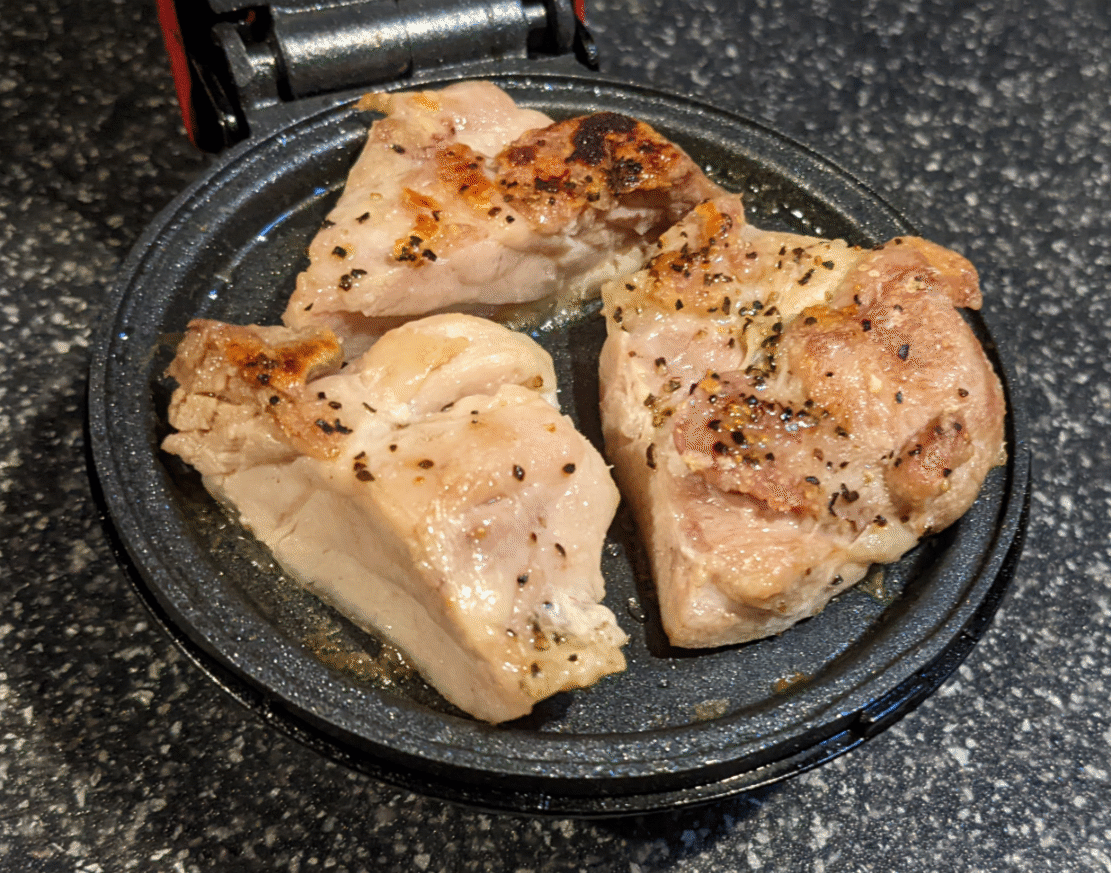
The batteries came back up to 12.9 Volts after I unplugged the griddle. And the chicken was tasty. I call it a success. And a burger I cooked later was as good as any pan-fried burger I’ve ever had.
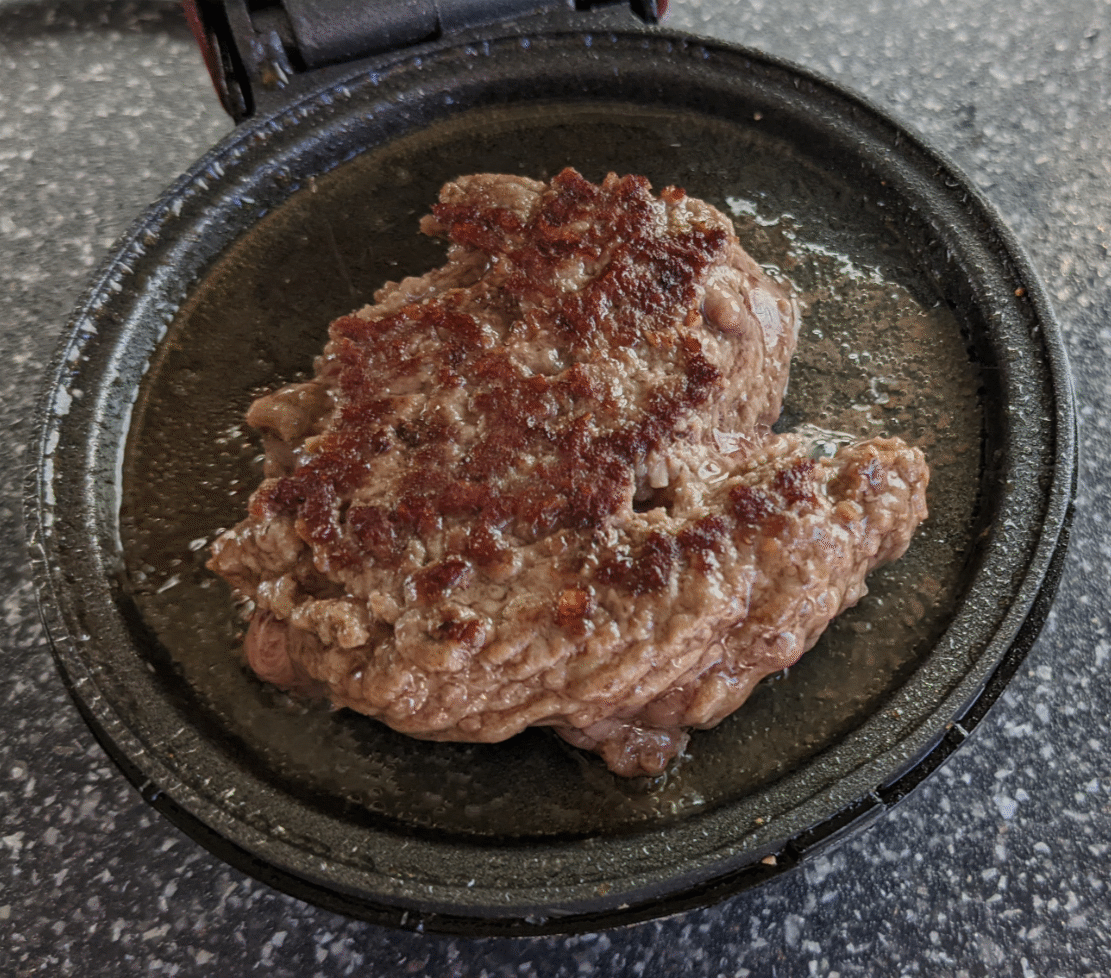
My thoughts
The Dash Mini Maker Griddle seems to be a suitable cooking appliance for small electrical systems. It cooks quickly while using only a little power. You probably wouldn’t want it to be your only cooking option since its size limits it to small, relatively flat foods cooked one at a time. However, that could be a plus for people concerned with portion control.
I have no idea how long this griddle might last. If it were to malfunction, I suspect it would be an electrical problem, like burning out a heating element. But since the griddle is only twenty bucks, it wouldn’t be a tragedy if it was short lived.
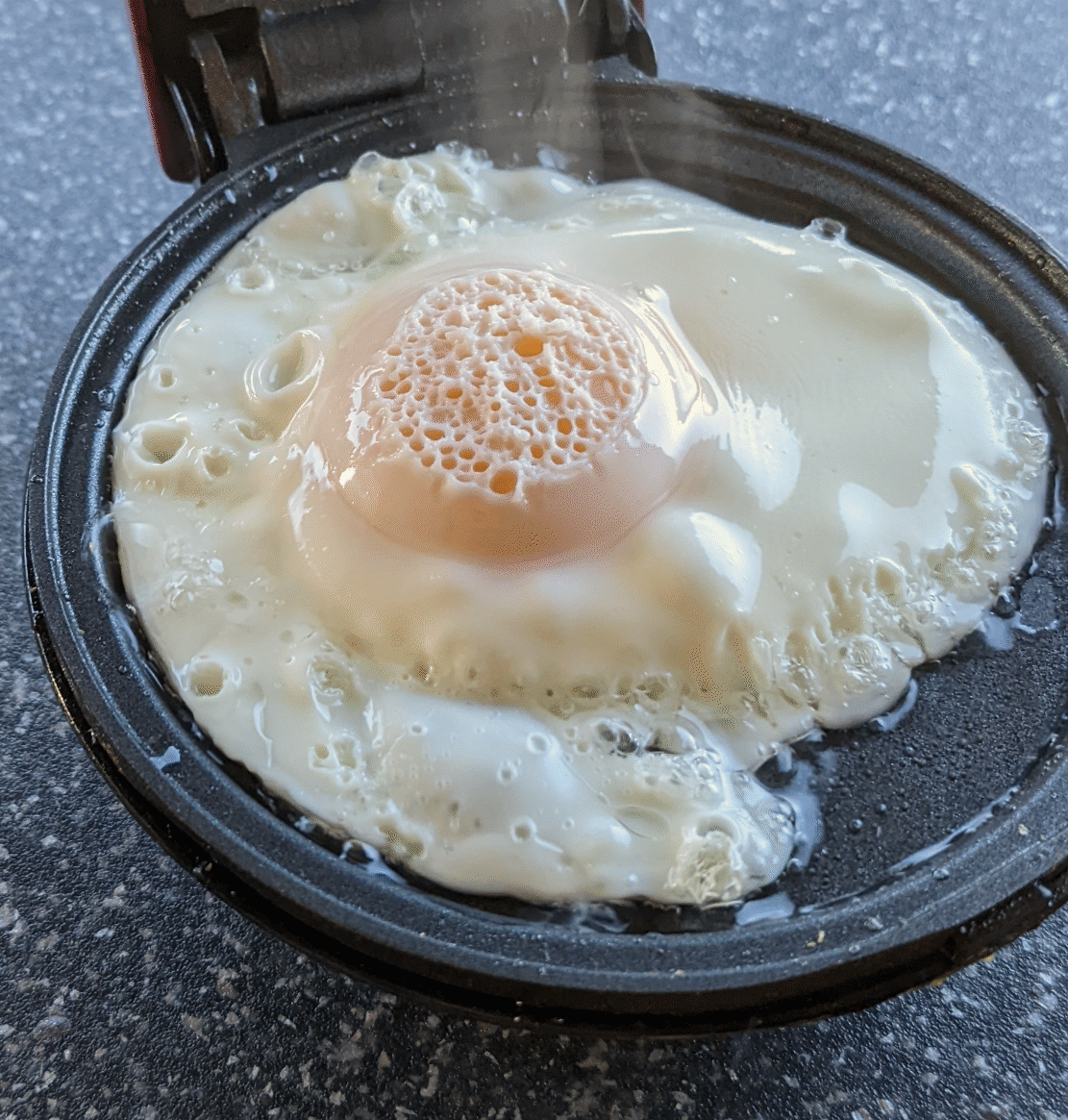
Also
The Dash Mini Maker Griddle really holds onto heat. That’s one reason it can cycle off and remain hot. It’s all metal, except for the feet and a small plastic part where the power cord is attached. The outside gets very warm too, and stays warm for several minutes after it’s unplugged. That can be good (a small source of warmth in your vehicle) or it can be a problem. Handle with care, keep pets away.
Oh, and in case it matters to you, this griddle is available in several colors.

Thanks for the great review Al. We have the waffle version of this, have made hundreds of waffles over the last 5 years and the unit is still going strong. I highly recommend them.
I just now bought two. Thanks for the info.
Very usable information! I have an electric pot that has two settings. 200W and 600W. It’s just like the electric frying pans of our youth, only round and smaller. However, I like the idea of the Dash cooking on both sides at once, and there is some splatter protection while still letting air escape. It’s going in my Amazon cart.
Can you share details on the electric pot you bought?
I have used the Dash Mini Maker sandwich grill. Worked as designed but normal sandwich bread stuck out the sides.
Since then I found a Nostalgia MyMini sandwich grill at a thrift for ~$5. 520w, which is more than I’d like, but it does fit normal sandwich bread completely. I assume the higher power consumption is directly related to the increased heating surface area. I will donate the Dash to goodwill next time I leave the woods. 🙂
I have the Dash Mini Waffle Maker. I do basically the same recipes on it as you. I Love grilled cheese, fried eggs(with the little indent that holds cheese/etc) Perfect for my single way of living♥️
I have used these for years, have one with the lines and one flat. They don’t draw much for sure!
I even got one of the next sized up, 8″ I think for the house. I can do most of my breakfasts and lunch on it.
One thing like all these non-stick things you have to keep it clean or there is some smutch that grows in it and eats the coating.
I bought this little griddle from your recommendation.
It is a wonderful item. It heats up in a minute or so, big fluffy pancakes take about 2 minutes and while you’re eating one the other one is getting finished. Perfect timing.
And the fried eggs are wonderful. Just a minute or so and you have gooey yolks and perfectly set whites. This morning I also made a grilled cheese. Going to try a hamburger next .
Thank you so much for your review.
FYI DASH makes many small kitchen appliances. Check out their website! I have had a wafflerfor some time and just bought the griddle and love it. Portion control!
I have the waffle maker – 2 years now. It was a goid purchase. I recommend it. Mine is bright red!
Walmart has them on sale at $5.00/each. They are called Nostalgic.
Bet it would be more efficient than my B&D toaster oven!
How about cooking with an air fryer? I’d love to see how doable that is… I live off grid (but stationary) with a small’ish solar system, currently use mostly propane for cooking. I did buy a Dash mini waffle maker when we jumped on the chaffle bandwagon last year, was pleasantly surprised at how nicely it played with our system. I’ve been considering getting the Dash mini griddle. The only thing I dislike about these appliances is the non-stick surface, I prefer cooking on stainless steel and cast iron. I’d pay extra to have these appliances in a stainless, ceramic or cast iron…
Thanks!
According to the Dash site, their mini air fryer is rated at 1,000 Watts. That’s sort of on the high side, depending on your power system. There are microwaves out there rated at 700 Watts.
I’ve seen several Dash mini kitchen appliances at Walmart. There’s a YTer (Counter Cooking) who reviews and experiments with a lot of small appliances including the mini griddle and 8″ express griddle, offers a recipes playlist, has even found a small pot that fits in the Dash mini griddle, and shares mishaps–which are both entertaining and real.
Thanks for the review.
I just bought I am 74 live in a 32 ft trailer I love love it works perfect for my needs